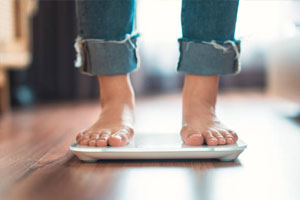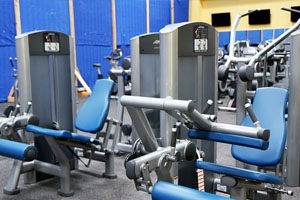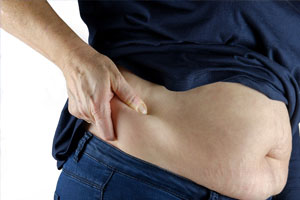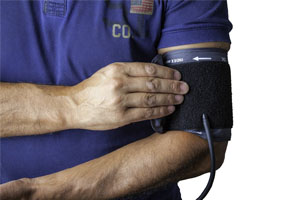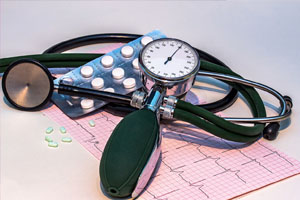Discover the best practices and techniques for oral hygiene Learn the importance of proper teeth brushing and how it contributes to a healthy smile Find expert guidance on maintaining your dental health
What is the proper way to brush your teeth? Maintaining good oral hygiene is essential for healthy teeth and gums. One of the most fundamental aspects of oral care is proper teeth brushing. Knowing how to brush your teeth effectively can help prevent dental issues, such as cavities and gum disease. In this guide, we will explore the right techniques, tools, and common mistakes to avoid when brushing your teeth to ensure your smile stays bright and your oral health remains strong.

Understanding the Importance of Proper Teeth Brushing
Proper teeth brushing is the foundation of good oral hygiene and essential for maintaining a healthy smile. It plays a crucial role in removing plaque, food particles, and bacteria that can lead to tooth decay, gum disease, and bad breath. Regular and thorough brushing helps prevent oral health issues and ensures that your teeth and gums stay in excellent condition. It's not only about maintaining a bright smile but also about preserving your overall health. By understanding the significance of proper teeth brushing, you take the first step towards a healthier and happier life.
Tools for Proper Teeth Brushing
Brushing your teeth is a fundamental part of oral hygiene, but using the right tools is equally important. The proper tools can make a significant difference in the effectiveness of your oral care routine. Here, we'll explore the essential tools you need for brushing your teeth effectively and maintaining good oral health.
Toothbrush
The most basic tool for teeth brushing is, of course, the toothbrush. Manual toothbrushes come in various shapes and sizes, and you can choose one that feels comfortable in your hand and mouth. However, many people are now opting for electric toothbrushes. These devices use oscillating or rotating bristle heads to remove plaque and debris more effectively. They often come with built-in timers to ensure you brush for the recommended two minutes.
Toothpaste
Toothpaste is another essential tool. It contains abrasives to help remove stains and plaque, fluoride to strengthen tooth enamel, and flavorings to freshen your breath. It's important to choose a toothpaste that suits your needs. Some are designed for sensitive teeth, while others focus on whitening. Consult your dentist if you're unsure which type is right for you.
Floss or Dental Tape
Don't forget about floss or dental tape. These tools help clean between your teeth and along the gumline where your toothbrush may not reach effectively. Flossing removes food particles and plaque, reducing the risk of gum disease and cavities.
Mouthwash or Antiseptic Rinse
Mouthwash or antiseptic rinse can provide additional cleaning and freshening. They kill bacteria in your mouth and leave your breath minty. Look for products that contain fluoride for added protection against cavities.
Tongue Cleaner or Scraper
Lastly, don't overlook your tongue. A tongue cleaner or scraper is a handy tool to remove bacteria and debris from the surface of your tongue. This can help prevent bad breath and improve your overall oral hygiene.
Step-by-Step Guide for Effective Teeth Brushing
Proper teeth brushing is essential for maintaining good oral health. To ensure you're getting the most out of your brushing routine, follow this step-by-step guide:
1. Preparation
Start by choosing the right toothbrush and toothpaste. Make sure your toothbrush has soft bristles to avoid damaging your gums and enamel. Apply a pea-sized amount of toothpaste to your brush.
2. Positioning
Hold your toothbrush at a 45-degree angle to your gums. This angle allows the bristles to reach both the tooth surface and the gumline effectively.
3. Brushing Technique
Using gentle pressure, move the toothbrush in a circular motion. Be sure to clean the outer and inner surfaces of your teeth. To clean the chewing surfaces, use a back-and-forth motion. Don't forget to brush your tongue and the roof of your mouth to remove bacteria and freshen your breath.
4. Brush for Two Minutes
Brush for a minimum of two minutes, focusing on every quadrant of your mouth. Some electric toothbrushes come with timers to help you keep track of your brushing time.
5. Don't Overdo It
While it's important to brush thoroughly, aggressive brushing can harm your teeth and gums. Use gentle, circular motions, and let the bristles do the work. Excessive force can lead to gum recession and tooth sensitivity.
6. Rinse and Clean
After brushing, thoroughly rinse your mouth and toothbrush to remove any remaining toothpaste and debris. Store your toothbrush in an upright position to allow it to air dry, and replace it every three to four months or when the bristles show signs of wear.
Common Mistakes to Avoid
While understanding the proper way to brush your teeth is crucial, it's equally important to steer clear of common mistakes that can compromise your oral hygiene. Here are some errors to avoid:
1. Using the Wrong Toothbrush
One common mistake is using a toothbrush with hard bristles. Soft bristles are gentler on your teeth and gums, reducing the risk of damage. Opt for a soft-bristle toothbrush to avoid abrasive brushing.
2. Brushing Too Hard
Aggressive brushing can lead to enamel wear, gum recession, and tooth sensitivity. Brush gently using soft, circular motions. Let the toothbrush bristles do the work; there's no need for excessive force.
3. Skipping the Tongue and Roof of the Mouth
Oral bacteria can accumulate on your tongue and the roof of your mouth. Skipping these areas during brushing neglects a significant part of your mouth. Remember to gently brush your tongue and the roof of your mouth for thorough cleaning.
4. Not Brushing Long Enough
Many people fall short of the recommended two-minute brushing time. Brushing less than this duration may leave areas of your mouth inadequately cleaned. Consider using a timer or an electric toothbrush with a built-in timer to ensure you brush for the recommended time.
5. Rarely Replacing Your Toothbrush
Over time, toothbrush bristles wear down, reducing their effectiveness. Replace your toothbrush every three to four months, or sooner if you notice fraying bristles. A worn toothbrush can't clean your teeth as effectively as a new one.
6. Neglecting Flossing and Rinsing
Proper teeth cleaning isn't limited to brushing alone. Don't forget to floss daily to remove food particles and plaque between your teeth. Additionally, use an antibacterial mouthwash for a comprehensive oral care routine.
7. Rushing Through the Process
Effective brushing takes time. Rushing through the process may lead to missed spots and inadequate cleaning. Dedicate a full two minutes to your brushing routine to ensure thorough coverage.
By avoiding these common mistakes, you can enhance your oral hygiene and keep your teeth and gums healthy.
Frequency of Teeth Brushing
The frequency of teeth brushing plays a significant role in maintaining good oral hygiene. Knowing how often to brush your teeth is crucial for a healthy smile. Here are some essential guidelines:
1. Brush Twice a Day
It's widely recommended to brush your teeth at least twice a day – once in the morning and once before bedtime. This routine helps remove the accumulated plaque and bacteria, keeping your mouth clean and fresh.
2. After Meals
Brushing your teeth after meals, especially when you've consumed acidic or sugary foods, can prevent the formation of harmful plaque and cavities. However, wait at least 30 minutes after eating to avoid brushing when your mouth is acidic, which can soften tooth enamel.
3. Using the Right Technique
While brushing frequency is essential, the effectiveness of your brushing technique is equally crucial. Brush gently but thoroughly, making sure to clean all surfaces of your teeth and gums. Don't forget to brush your tongue, as it can harbor bacteria and cause bad breath.
4. Flossing and Rinsing
Brushing should be complemented with daily flossing to clean between teeth and rinsing with an antibacterial mouthwash to remove bacteria and freshen your breath. These practices should be part of your daily oral care routine.
5. Avoid Overbrushing
Brushing your teeth more than three times a day, especially with a hard-bristle toothbrush, can lead to enamel wear and gum damage. Stick to the recommended frequency and technique to protect your oral health.
Remember, maintaining a consistent and effective brushing routine contributes to healthy teeth and gums. By following these guidelines, you can ensure your smile remains radiant and free from dental issues.
Frequently Asked Questions (FAQs)
Q1: How often should I brush my teeth?
A1: It's recommended to brush your teeth at least twice a day, ideally in the morning and before bedtime. Brushing after meals is also beneficial, especially if you've had sugary or acidic foods. However, avoid brushing immediately after eating to protect your tooth enamel.
Q2: What's the right technique for brushing my teeth?
A2: The proper technique involves using a soft-bristle toothbrush and a fluoride toothpaste. Brush gently in a circular motion, ensuring you cover all tooth surfaces, including the fronts, backs, and chewing surfaces. Don't forget to brush your tongue and use a gentle hand to prevent gum damage.
Q3: Is it necessary to floss and use mouthwash along with brushing?
A3: Yes, flossing and using an antibacterial mouthwash are essential components of a comprehensive oral care routine. Flossing helps clean between your teeth and removes debris, while mouthwash freshens your breath and reduces bacteria in your mouth.
Q4: Can I brush my teeth too frequently?
A4: Yes, it's possible to overbrush your teeth, which can lead to enamel wear and gum damage. Avoid brushing more than three times a day, and ensure you're using a gentle technique with a soft-bristle toothbrush.
Q5: What should I do if I experience tooth sensitivity while brushing?
A5: Tooth sensitivity can occur due to various factors. If you experience sensitivity while brushing, switch to a toothpaste formulated for sensitive teeth. Additionally, consult your dentist to rule out any underlying dental issues causing the sensitivity.




